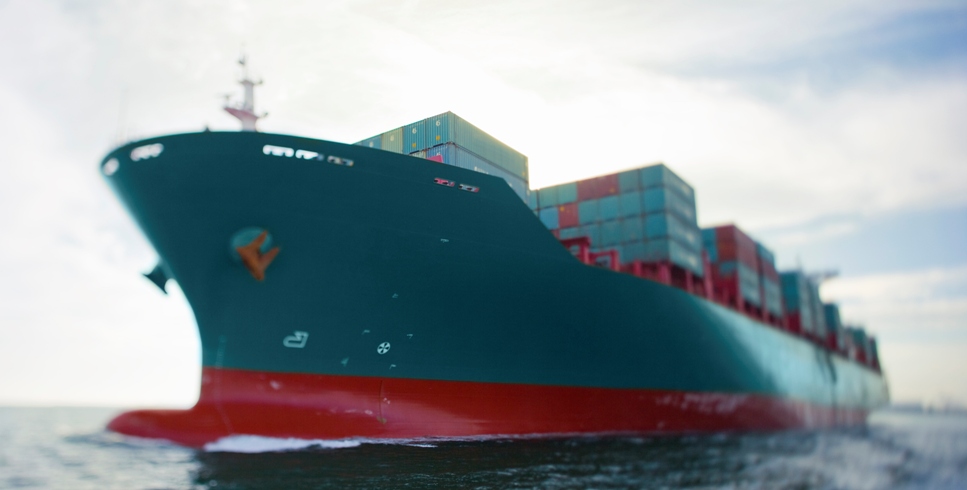With much speculation earlier in the year that household goods shipping rates were likely to increase this spring, The Mover spoke to Harm Meierdirks, Chairman and Regional Director European Mainland for OSA, to find out how the market is holding up.

OSA (Overseas Shippers Association) has, for the last 20 years, negotiated shipping rates and settled disputes with the world’s carriers on behalf of its member moving companies. Over that period Harm said that shipping rates had changed dramatically, both up and down, but today, as the world continues to wrestle with its economic difficulties, prices are generally low and stable.
The North Atlantic is the biggest trade route and is experiencing stable rates since the lines imposed a series of General Rate Increases. “As far as I can see the rates will stay stable this year as long as no new carriers enter the market and increase capacity.” Harm said that if that does happen rates will come under pressure again but as the current carriers are hardly making any money now it is unlikely that the route is sufficiently attractive for any new entrants to be interested.
The Europe-Asia route is, however, completely different. Rates on this route are largely determined by the level of trade westbound out of China and into Europe where rates can often be four-times the rate eastbound on the same vessels. When China was booming all vessels were full with seasonal surcharges applied. Then carriers added capacity by introducing new high volume ships, world trade dipped a little and a capacity problem was turned into a 10-15% surplus. “The lines had to do something so they laid up some services especially in the slow season. To maintain revenue they tried to impose a $500/TEU increase but commercial pressures made it impossible. In the end they only managed to get the rates up by $50-$100.”
Europe to South Africa and back is looking more stable. Rates have dropped a little but they can be more or less relied upon for the rest of the year.
Rates for Australia and New Zealand are also dependent upon the Asia market. “If the Asia rates are increasing and all the vessels are fully loaded Australasian rates increase as well,” Harm explained. “When Asian rates drop, so Australasian rates drop too.”
The South America west coast has seen a reduction in capacity as some lines feel it is too cost intensive to go there. Rates have, therefore, increased a little but they are more or less stable. Brazil rates, however, were going through the roof last year with services fully booked. The increases have, however, now slowed and for the remainder of 2013 any increases are expected to be modest.
Western Africa is a region that is booming and rates have been increasing. However the main ports often do not have the capacity to handle the traffic so congestion is a serious problem. Last year congestion charges of $2,000/40ft were not unusual in Angola.
Overall, Harm said that OSA’s rates are fairy stable although the old aim of trying to negotiate 12-month deals was now largely impractical. “You can get a 12-month deal but they would be too expensive. It doesn’t make sense.”
The 2013 rates are expected to increase a little but only because of the low level they have come from. It’s the depressed world markets are maintaining the stability. “The big volume comes from companies such as Walma rt and Tesco,” explained Harm. “These major players can only order their goods in the quantities they can sell them. So if consumers can’t spend more than they did last year that affects the whole shipping industry. That volume then affects the rates for every other commodity.”
rt and Tesco,” explained Harm. “These major players can only order their goods in the quantities they can sell them. So if consumers can’t spend more than they did last year that affects the whole shipping industry. That volume then affects the rates for every other commodity.”
This same dynamic is causing rates into the Mediterranean from Asia to be dropping rapidly. Last year TEU rates were around $1000 to Europe and $1200 to the Mediterranean. Now rates into the Med from Asia have fallen to around $800.
Overall shipping rates today are not much different, in some cases lower, than they were 20 or even 30 years ago. This is not caused by world markets or clever negotiation. According to Harm there is one overriding reason: “The ships are bigger,” he said. £20 years ago the biggest ships carried 4,500TEUs. The newest ships now are 400 metres long and carry 18,000TEUs. For carriers it only makes sense to operate a vessel like this is it has good utilisation, the rate is less important so the rates in total are dropping.”
Of course, for movers, the actual rates paid don’t matter as costs are passed on to customers. If customers could afford to pay the rates 20 years ago from the sale of their houses, they definitely can today. What matters is the relative cost compared with their competitors and the service they receive, especially during times of capacity shortage, and their consistency. When you have to quote people months ahead of their move it’s helpful to have a good idea of what the rates are likely to be. Although we have relative stability now, Harm is always reluctant to predict the future. “It’s a crystal ball that’s quite foggy just now,” he said.
Read the editor's next pick